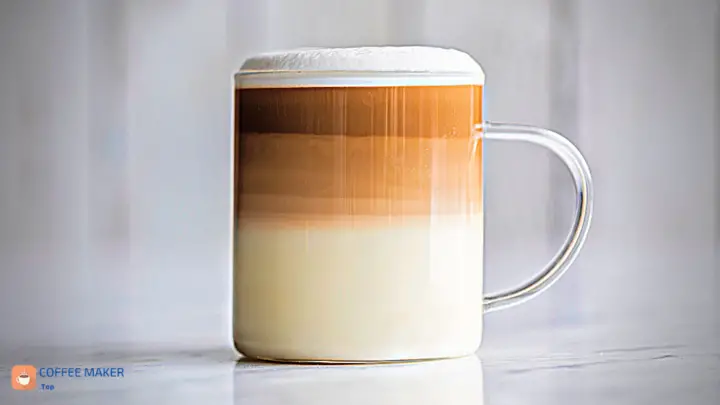For many worldwide, a warm and frothy caffè latte represents a quintessential breakfast drink. However, what distinguishes this popular beverage from similar-sounding options like latte macchiato, cappuccino, and caffè macchiato?
While these drinks may appear similar at first glance, their differences are quite significant, impacting not only their taste but also their preparation and serving styles. This guide will explore how each drink is made and what makes them unique.
Differences between caffè latte and cappuccino
Caffè latte, also known as “coffee with milk”, is a beloved morning beverage for many. It’s often paired with toast or pastries when enjoyed at a café, but it’s also a popular homemade drink. At home, it’s often served alongside a generous helping of biscuits.
To make this drink, milk and coffee are heated together without needing foam. The drink’s temperature is usually not very high, though this can vary depending on the preferences of regular consumers.

Compared to cappuccino, the cup used for caffè latte is narrower and taller. In cafés, cappuccino is served in a wider, slightly lower cup than the one used for a latte.
Differences in how cappuccino and caffè latte are prepared
Like caffè latte, cappuccino is made by combining milk and coffee. However, cappuccino has a stronger coffee taste, with the milk and coffee quantities nearly equal (although the exact percentages may vary based on personal preference).
What sets cappuccino apart from caffè latte is the delicate foam on top, which gives the drink its signature taste. This foam is typically bitter, though some may add sugar for a sweeter flavour. Adding cocoa powder to the foam has also become popular in recent years.
To ensure a strong coffee flavour, both caffè latte and cappuccino are made with espresso coffee prepared using a coffee machine. Some may prefer a larger dose of coffee than the standard amount.
Even during hot summer, some cappuccino enthusiasts can’t bear to give up their favourite drink. In such cases, they may request their cappuccino to be lukewarm or made with cold milk to help beat the heat. Despite these variations, the love for cappuccino remains unchanged.
Different variations in preparation for cappuccino
While cappuccino and latte are typically made by mixing coffee and milk, some people with dietary intolerances require modifications. For instance, those who love the taste of cappuccino but can’t tolerate caffeine may request it to be made with barley or decaf coffee.
Similarly, people who can’t have dairy may ask for soya milk or other non-dairy alternatives to be used instead. This means the classic Italian cappuccino, made with milk, is no longer the only option.
However, it’s worth noting that the foam on a cappuccino made with soy milk will likely differ from that of a traditional cappuccino, which relies on whole milk for the right texture.
Another alternative for those watching their calorie intake is to request semi-skimmed milk, which contains less fat than whole milk.
Differences between latte macchiato and cappuccino
Latte macchiato, caffè latte, and cappuccino are world-famous breakfast drinks, but how do they differ?
Many people think the differences are minimal, but that’s not true. There are significant differences, which you will notice as you continue reading this page.
Unlike cappuccino, latte macchiato is served in a tall glass, and the amount of milk is much higher than that of coffee.
There is no foam, and it is loved by those who do not particularly prefer the taste of coffee and instead want to enjoy the flavour of warm milk, slightly flavoured by a minimal aroma of coffee.

Its preparation involves liquid milk at the bottom of the glass, then the addition of coffee and, to complete, slightly thickened milk. However, it should not be as frothy as cappuccino, except in the case specifically requested by the customer.
Differences between caffè macchiato and caffè latte
Caffè macchiato is a regular coffee with a bit of milk. It usually comes with foam, although calling it “simple” is not accurate because, even in this case, variations accompany consumers’ tastes.
For caffè macchiato, you can ask for cold or hot milk without foam, or in more complicated cases, some ask for coffee with cold milk and foam. As you can see, many possible variations to enjoy breakfast exist.
Caffè macchiato is served in a classic coffee cup, and in some cases, certain baristas use slightly larger and more big cups because the trend of recent years involves Coffee Art.
This means creating artful caffè macchiato with designs and decorations on the foam using melted liquid chocolate.
Variations include a light dusting of bitter cocoa, cinnamon, and the more artistic individuals have fun composing true designs and writing on the foam. At that point, it almost seems like a sin to consume it!
Other variations
We have presented the classic breakfast with the abovementioned beverages, but as you have noticed, we go well beyond these classic solutions for breakfast.
To accommodate some complicated tastes, baristas have invented other variables, such as the macchiatone.
This is similar to the macchiato of cappuccino but is not made with milk but with milk cream. It is served with a cup that resembles a cappuccino but is visibly smaller because the quantity is lower.
Key differences to remember
As shown in the table, caffe latte, cappuccino, and latte macchiato all contain espresso and milk, but the quantity and texture of the milk vary.
| Coffee Beverage | Key Ingredients | Espresso Quantity | Milk Quantity | Milk Texture |
|---|---|---|---|---|
| Caffe Latte | Espresso and steamed milk | 25 ml | 125 ml | Smooth and creamy |
| Cappuccino | Espresso, steamed milk, and milk foam | 25 ml | 75 ml (milk) + 75 ml (foam) | Thick and frothy foam, velvety milk |
| Latte Macchiato | Steamed milk with a shot of espresso | 20 cl (5% espresso) | 20 cl (milk) | Layered milk and espresso |
- The Caffe latte has the most milk, with a smooth and creamy texture.
- Cappuccino has less milk but is divided between steamed milk and thick, frothy milk foam, giving it a unique texture.
- Latte macchiato has less milk than caffe latte and cappuccino but is layered with espresso. The layers are distinct due to the different consistencies of the liquids used.
Ultimately, the choice of coffee beverage for breakfast comes down to personal preference. Breakfast culture offers something for everyone, whether you prefer a smooth and creamy caffe latte, a frothy cappuccino, or a layered latte macchiato.
